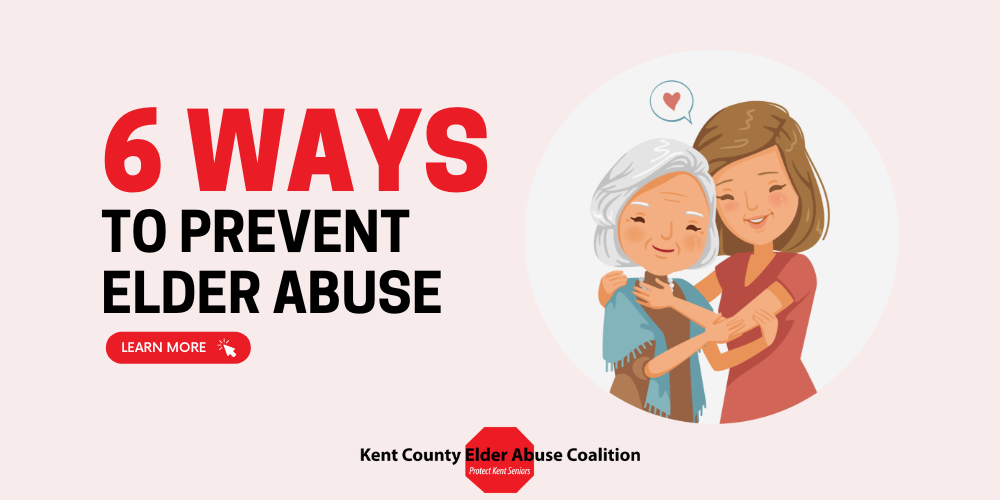Articles
6 Ways to Prevent Elder Abuse

Elder abuse can take many forms, including physical, emotional, and financial. It’s estimated that one in six older adults experience elder abuse, yet only one in twenty-four cases are reported. As the population ages, the need to protect our elders from abuse becomes even more important.
1. Education and Awareness
Education is a powerful tool in combating elder abuse. By raising awareness among caregivers, family members, and the community, we can help identify and prevent abuse before it starts. The Kent County Elder Abuse Coalition is one organization that specializes in education, training, and seeking justice for those who have experienced elder abuse. If your organization would like an educational presentation, you are welcome to request one at www.protectkentseniors.org
2. Strengthen Social Support Networks
Isolation is a risk factor for elder abuse. By helping seniors to build and maintain their social support networks we can provide older adults with a safety net of trusted individuals who can monitor their well-being and step in if abuse is suspected.
This could involve joining exercise classes, attending congregate meals, or visiting a senior center. For a full list of services and support in the counties we serve, visit our service directory.
3. Legal and Institutional Safeguards
Implementing strong legal and institutional safeguards can protect elders from abuse. This includes laws that protect against abuse, effective reporting mechanisms, and strict regulations for caregivers and institutions. Advocates for Senior Issues is an organization focused on advocating for older adults and helping to ensure support for seniors. Additionally, if you are experiencing abuse, report it to Adult Protective Services at (855) 444-3911. This hotline is available 24 hours a day. In nursing facility settings, you can contact the Long-Term Care Ombudsman office at (866) 485-9393. If you or someone you know is in immediate danger do not hesitate to call 911 for help.
4. Keep An Eye Out For Physical Signs
Not all elder abuse looks the same, but physical abuse or neglect may include bruises, broken bones, abrasions, and burns. These injuries may appear on various parts of the body and often come without explanations from the caregiver or the elder themselves, who might be afraid to speak up.
5. Watch For Emotional and Behavioral Changes
A sudden change in mood or behavior could be a sign of abuse. Look for signs like withdrawal from social activities, unexplained fearfulness, anxiety, or depression. Older individuals may also become unusually agitated or display a significant decline in cognitive abilities which can be a result of trauma.
6. Note Any Financial Irregularities
Financial abuse is a common form of elder abuse. Be aware of sudden changes in financial situations, such as large withdrawals from bank accounts, missing valuables, or changes in wills and financial documents. Unpaid bills or lack of basic necessities despite having adequate resources can also be indicators.
Preventing elder abuse requires a multi-faceted approach that includes education, social support, and legal protections. By staying informed we can create a safer environment for our seniors. Recognizing the warning signs and knowing how to respond can make a significant difference in the lives of older adults, ensuring they live with the dignity and respect they deserve.
Tagged:

